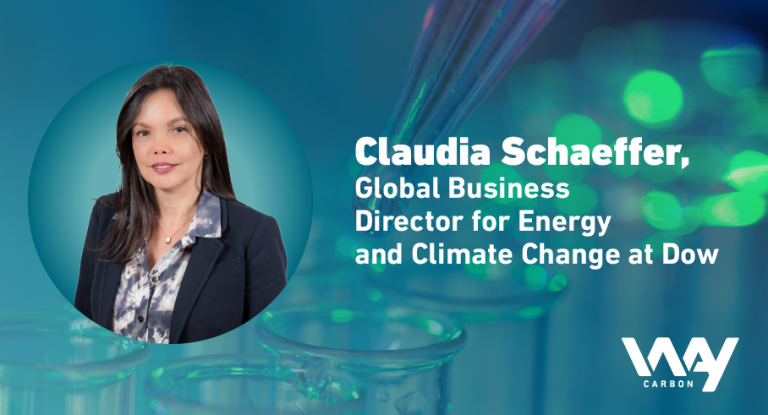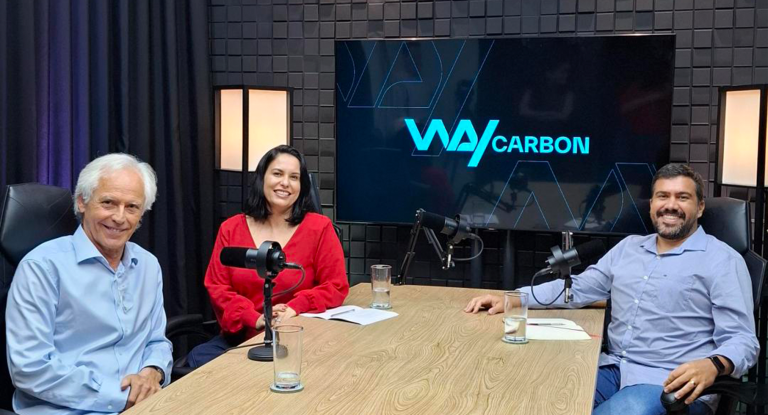How is Dow dealing with climate change?

Interview with Claudia Schaeffer, Global Business Director for Energy and Climate Change at Dow
Founded in 1897, in the United States, Dow’s purpose is to combine chemistry, biology and physics to create innovative technologies that contribute to the progress of humanity. Present in 31 countries, the corporation employs more than 35,700 people. In Brazil, there are more than 2 thousand employees, 10 production units (distributed in São Paulo, Pará, Bahia and Minas Gerais states) and an Innovation Center, located in the city of Jundiaí (São Paulo state).
Aware of its size and impact, Dow carries out several initiatives to integrate the climate agenda and ESG aspects into its operation. In this sense, it has set an ambitious goal of reducing its greenhouse gas (GHG) emissions by 5 million tons by 2030 and becoming carbon neutral by 2050.
To achieve this goal, the company needed to develop a robust decarbonization plan, validate the GHG measurement methodology and deepen the identification of Scope 3 emissions, referring to its value chain. So, in 2021, Dow engaged to WayCarbon’s consulting services.
In an interview for this blog, Claudia Schaeffer, Global Business Director for Energy and Climate Change at Dow, talks about the project carried out, the lessons learned and the company’s next steps in combating climate change.
What were Dow’s main challenges when pursuing WayCarbon?
At Dow, we set an ambitious goal to reduce our emissions by 5 million tons by 2030 and become carbon neutral by 2050. As part of this global goal, we needed to build and validate a robust decarbonization plan that would consolidate the integration position of the Aratu, Guarujá and Jundiaí sites in Brazil, as well as the various integrated initiatives to reduce the carbon footprint. By seeking WayCarbon’s support, we also wanted to validate our Scope 1 and 2 greenhouse gas measurement methodology, as well as delve deeper into tracking and measuring Scope 3 emissions, which represent two-thirds of our total emissions and are one of the major challenges for the value chains’ decarbonisation.
What were the team’s lessons learned and/or perceptions during the study construction process?
The study confirmed that we have an advantage in terms of carbon footprint, as Dow ranks among the top consumers of clean energy in the chemical industry, ranking among the top 25 global corporations in renewable energy use. With the present study, we had more clarity to outline the next steps towards Dow’s carbon neutrality strategy, identifying risks and opportunities.
We also understand the challenge of reducing, mainly, the footprints related to our suppliers. Therefore, it is important that we work closely with them, as well as engage our various stakeholders in the topic of sustainability and decarbonization.
What were the main results of the work in terms of structuring a strategy to reduce and offset greenhouse gas (GHG) emissions?
WayCarbon’s study allowed us to identify the main technologies for the transition to a low carbon economy and guided us to build a consistent plan that allows us to reach net zero in scope 1 and 2 emissions.
How does this work performed in Brazilian plants fit into Dow’s global ESG and climate change strategy?
We have energy-intensive plants in Brazil that are part of the decarbonization efforts for the achievement of Dow’s global emissions reduction targets. Brazil has a differentiated position in terms of clean and competitive energy, which gives us the opportunity to decarbonize our operations faster and more cost-effectively than other regions. This work also addressed scope 3 emissions, aligned with our 2050 carbon neutrality targets. Engagement with suppliers and clients will be key.
What are the company’s next steps in relation to the climate change agenda?
Our strategy is to decarbonize and grow, so our plan to achieve carbon neutrality for 2050 focuses on five key areas:
- Optimizing our manufacturing facilities and processes for more sustainable operations;
- Increasing clean energy in our purchased energy mix;
- Collaborating with our suppliers and clients to reduce carbon emissions from our value chains;
- Investing in the development and scalability of low carbon production technologies;
- Developing innovative products, technologies and services that reduce emissions from our value chains.
We announced last year our first net zero complex in Canada with circular hydrogen development and CO2 capture and sequestration. In addition, we are working with our logistics and raw material suppliers on decarbonization opportunities. One example is our recent partnership with Ambipar and Scania in Brazil to begin shifting the energy matrixes of our transportation operations to cleaner sources with the inclusion of CNG-powered trucks.
 EN
EN  ES
ES PT
PT



